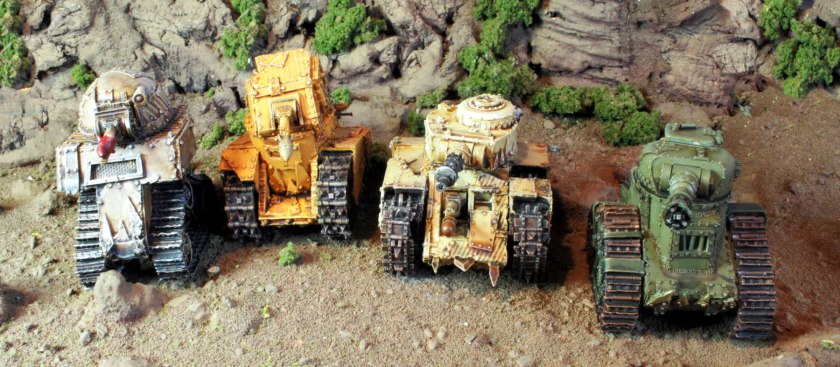I was a little saddened and disappointed by some recent news about Forge World.
I was reading the latest news, Warhammer 40,000 and Forge World: Legends and Last Chance to Buy, on the Warhammer Community about the retirement of certain models.
There’s slightly bittersweet news for Warhammer 40,000 fans today, as some long-serving miniatures will be retiring from the range – both classic Space Marines, and a selection of Forge World kits.
I do accept the retirement of Forge World resin models, those where models have been replaced by plastic kits, or those where the models are no longer in the codex or the rules. That I get.
What makes me a little saddened and disappointed was this comment in the article:
There will still be Forge World units for Warhammer 40,000, but the focus for them will be on the really big stuff – like Titans, and other kits that we can’t reasonably produce at that scale (yet!). When we add new units in future, they will almost always be in plastic – and there are a lot of plastic kits on the way over the next few years!
I like the idea of new plastic kits, but where I think they are missing the trick is to use Forge World not only to produce those big kits (that they won’t do in plastic) but to produce two types of kits that would enhance and expand the Warhammer 40000 game.
The first of these is new units, those that add real variety to the armies you can field. A past example of that was the Grot Mega Tank. Another example was the Grot Tanks. These were not in the main Ork Codex, but certainly added something different to an Ork army. I liked how there were not just four models in the pack, but the way the models were designed, you could build them in a variety of ways.

I guess the reasoning here is not just about the range of models, but the need to provide rules for these types of models as well.
The second kind of model I think they should produce are variant units. I have in my own collection for example the Ork Halftrakk which is a variant Trukk. I think there could be a range of variant models that would enable for some armies a more varied and cosmopolitain look. This would be critical for some armies, such as Orks, but also Genestealers, Chaos, Tyranids, and others.
Reflecting on Orks, I would like to see a much wider range of buggies for example different kinds of Snazzwagons. I like what Forge World did in the past with the Battlewagon (now the Bonebreaka).
I did like the Imperial variants that Forge World produced as well. I much prefer my Forge World Razorback compared to the plastic kit at the time.

I guess though that Forge World will still be making new resin models for The Horus Heresy. Though this will mean Imperial (and Traitor) units only and not Xenos stuff like Orks!
So what do you think?





























